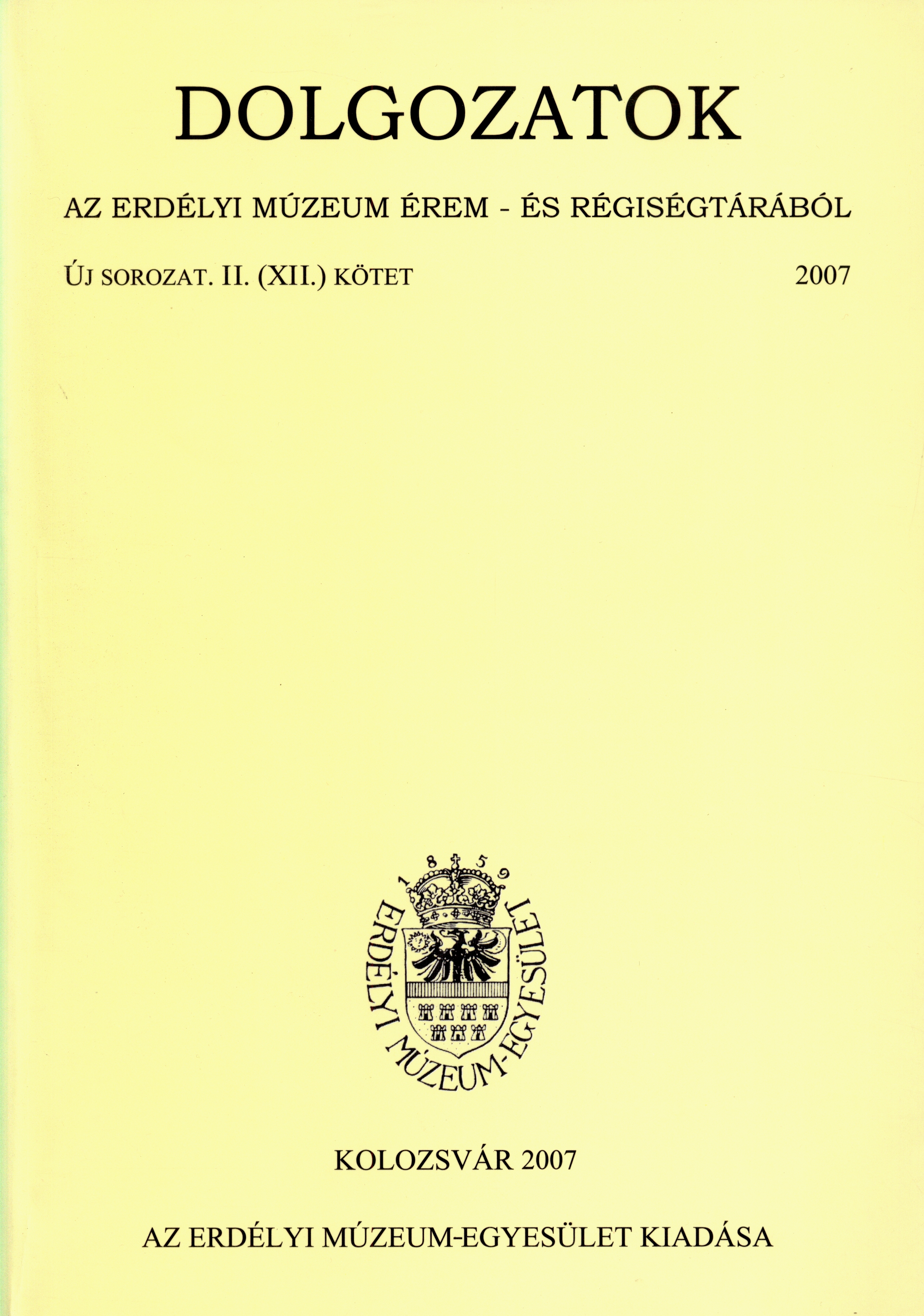A csíkszentkirályi plébániatemplom kutatása (2002)
Research on the Medieval Church at Sâncrăieni (Csíkszentkirály) (2002)
Author(s): Boglárka Tóth, István Botár, Miklós RáczSubject(s): Cultural history, 6th to 12th Centuries, 13th to 14th Centuries
Published by: Erdélyi Múzeum-Egyesület
Keywords: church history; parish church; Csík-basin
Summary/Abstract: The presented data were collected on the occasion of the outer refurbishment of the church of Sâncrăieni. We did not have the opportunity to do archaeological research elsewhere, nevertheless we could form a comprehensive history of the main building periods. Sâncrăieni is situated int he eastern part of Transylvania, in the former Szekler seat Csík. The name refers to Saint Stephen I, the first king of Hungary as „Saint King" (Szentkirály), this village name and its church had therefore been created before 1192, the canonization of the second saint king of Hungary, László I. The Hungarian-speaking population of the Szeklers was settled in the region int he late 12th and early 13th centuries. Sâncrăieni and its church were probably founded by the new settlers, but they can as well be of an earlier origin. The walls of the nave preserve the remains of two medieval phases. The western gate and one fragment of a window can be identified as parts of a Romanic period Later the nave was elongated towards the east, on this part of the southern wall an early gothic window was discovered. None of the medieval periods of the chancel is known, as the present chancel was built to the nave in 1759. Like the most village churches of the region, the medieval church had no spire, nevertheless a bell from 1562 testifies to the existence of a wooden tower. Based on dendrochronological dating of the timbers, the present tower in the west was built in the early 18th century. The roof forms of the two medieval phases of the nave were reconstructed on the basis of the western gable remains.The presented data were collected on the occasion of the outer refurbishment of the church of Sâncrăieni. We did not have the opportunity to do archaeological research elsewhere, nevertheless we could form a comprehensive history of the main building periods. Sâncrăieni is situated in the Eastern part of Transylvania, in the former Szekler seat Csík. The name refers to Saint Stephen I, the first king of Hungary as „Saint King" (Szentkirály), this village name and its church had therefore been created before 1192, the canonization of the second saint king of Hungary, László I. The Hungarian-speaking population of the Szeklers was settled in the region in the late 12th and early 13th centuries. Sâncrăieni and its church were probably founded by the new settlers, but they can as well be of an earlier origin. The walls of the nave preserve the remains of two medieval phases. The western gate and one fragment of a window can be identified as parts of a Romanic period Later the nave was elongated towards the east, on this part of the southern wall an early gothic window was discovered. None of the medieval periods of the chancel is known, as the present chancel was built to the nave in 1759. Like the most village churches of the region, the medieval church had no spire, nevertheless a bell from 1562 testifies to the existence of a wooden tower. Based on dendrochronological dating of the timbers, the present tower in the west was built in the early 18th century. The roof forms of the two medieval phases of the nave were reconstructed on the basis of the western gable remains.
Journal: Dolgozatok az Erdélyi Múzeum Érem- és Régiségtárából. Új sorozat
- Issue Year: 2007
- Issue No: II
- Page Range: 133-142
- Page Count: 10
- Language: Hungarian

